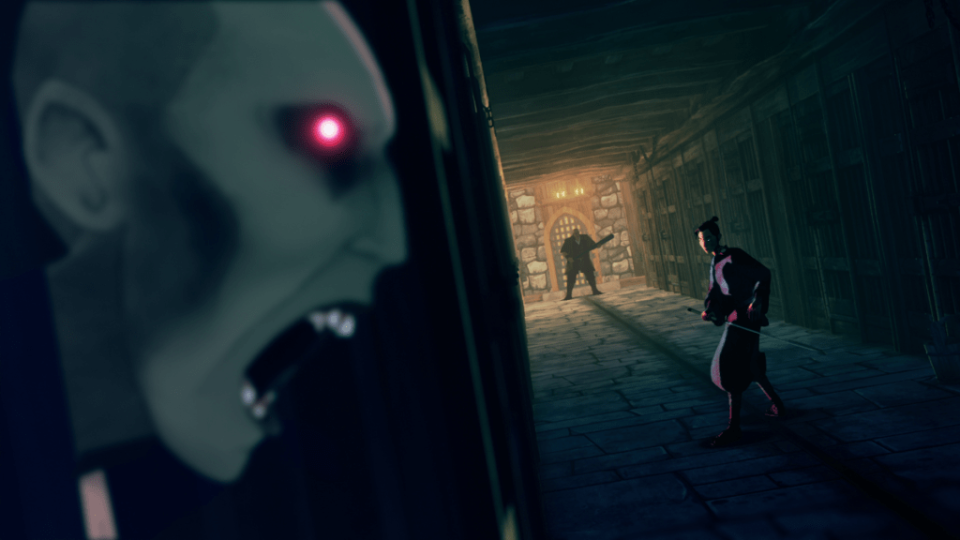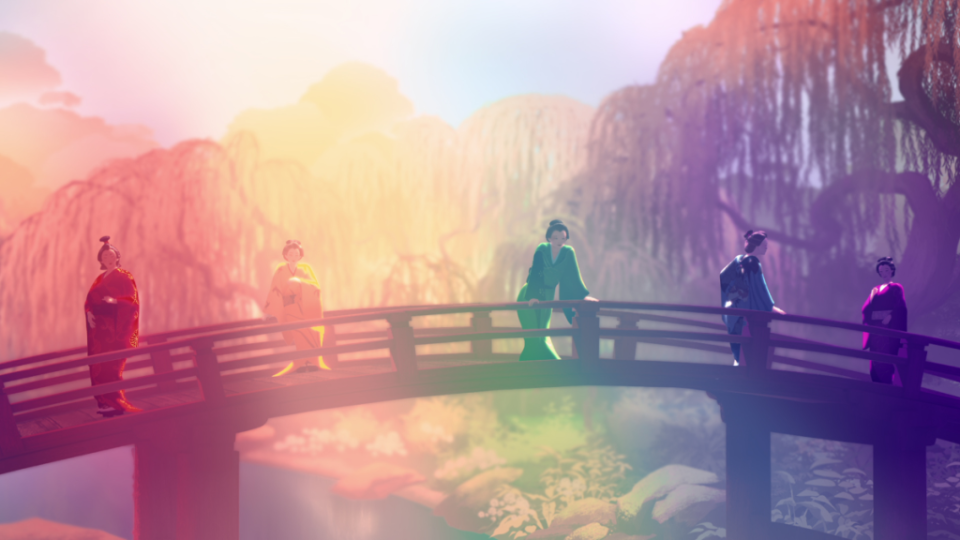How the ‘Blue Eye Samurai’ Creators Got Their Decidedly Grown-Up Animated Series Off the Ground
“Blue Eye Samurai” is a tale of retribution and revenge. The adult animated series is set in 17th-century Japan and follows a half-white, half-Japanese female warrior named Mizu (voiced by Maya Erskine) who, driven by self-loathing, wants to kill the four white men in the country (one of whom is her father). It features fluid animation from French studio Blue Spirit and fight sequences as brutal as any martial arts masterpiece.
And the Netflix series is voiced by a who’s who of actors: In addition to Erskine, there is Kenneth Branagh, George Takei, Ming-Na Wen, Stephanie Hsu, Randall Park, Cary-Hiroyuki Tagawa and Masi Oka. Created by Amber Noizumi and her husband Michael Green, the story grapples with identity, which Noizumi drew from her experience as a biracial, bicultural Japanese-American woman. For her, animation was the only way to tell this story, which, yes, does take place in the same era as FX’s “Shōgun,” but tells a very different tale.
“We wanted to do something different and in a way we hadn’t seen,” she said. “This was a very personal story. And we thought the only way to tell it was in a new way.”

The look of the series is a combination of 3D animation and a more painterly 2D style that draws inspiration from Japanese comic books, popular video games and anime. Noizumi said there was a test-and-adjust period where they were figuring out what level of 3D and 2D the art style would emphasize and what level of hybridization they would embrace.
Once they perfected the visual style, they talked to three animation studios to partner with, and Blue Spirit was the clear winner. “They were the only ones that understood that the characters need to act. This is about acting, this isn’t about action,” Noizumi said. “This isn’t about over-emoting, which a lot of cartoons would do. This was about micro-expressions.”
Green, whose numerous credits include writing “Logan” and “Blade Runner 2049” and producing the TV shows “Smallville,” “Heroes” and “Raising Dion,” said that he and Noizumi wanted the animators to maintain a “live-action aesthetic” throughout the storytelling.
“When working with our directors on blocking and shooting scenes, sometimes we’d have scenes with traditional coverage — master, over, over, close-up. And let’s hold on a close-up and treat our characters as actors and trust our team to make the performances trenchant and trust our audience to bring their emotions to it.”

Those visuals, combined with mature themes and violence, add up to a decidedly grown-up series. And that made it a harder sell to studios and streamers. But Netflix was interested in developing an animated drama for adults. “There have been a few animated dramas and we’re one of the first ones out there,” Green said. “We just feel fortunate that was a swing anyone was willing to take.”
Since premiering in November, “Blue Eye Samurai” has won five Annies and was recently nominated for a Peabody Award. Viewership on Netflix has been robust enough to lock in at least one more season, with more planned (the first season ends on a massive cliffhanger, so we can rest easy). “The thing we’re most appreciative of right now is that we get to keep telling our story,” Green said.
Season 2 will continue to tell a very personal story for Noizumi, with Mizu headed to London with one of her enemies (Branagh’s briny smuggler Abijah Fowler) to hunt down some of the other men. “The idea was always about growing up feeling like the only Asian kid [in America] and then going to Japan and realizing that nobody saw me as Japanese in Japan either,” Noizumi said. “And here’s Mizu, who thinks, Oh, I’m just this white monster walking around. And then she goes around other white people and has to confront that she will not fit in there either.”
This story first appeared in TheWrap awards magazine.
The post How the ‘Blue Eye Samurai’ Creators Got Their Decidedly Grown-Up Animated Series Off the Ground appeared first on TheWrap.


